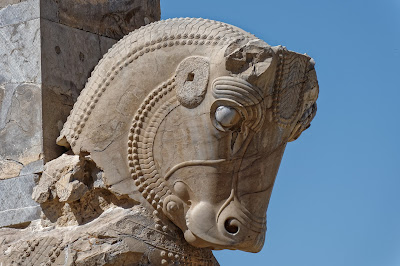Cycling Patagonia - Carretera Austral and beyond |
Patagonia
Patagonia is a region located in the southern end of South America, governed by Argentina and Chile. It consists of the southern section of the Andes Mountains, with lakes, fjords, temperate rainforests, glaciers, deserts, tablelands, and steppes. The Colorado and Barrancas rivers are commonly considered the northern limit of Argentine Patagonia, while the Huincul Fault is typically seen as the northern limit of Chilean Patagonia. Tierra del Fuego is sometimes included as part of Patagonia.
Patagonia was home to many indigenous tribes when the Spanish arrived. In colonial times, some of these tribes adopted a horseriding lifestyle while others continued to hunt and gather. During the 19th and early 20th centuries, Argentina and Chile slowly colonized the region, bringing a decline to the indigenous populations and causing thousands of Europeans and other settlers to move in. This colonization process led to border disputes between the two countries throughout the 20th century.
Carretera Austral
The Carretera Austral is a 1,270km road in rural Patagonia, Chile, stretching from Puerto Montt to Villa O'Higgins. It covers an area of 128,000km2, encompassing ice fields, rainforest, mountains, volcanoes, steppe, and rivers and lakes. The Valdivian temperate rainforest extends from Villarrica in the north to Parque Nacional Queulat in the south, with further rainforest spreading west of the Carretera Austral as far as the Reserva Nacional Laguna San Rafael.
The Carretera Austral traverses the Aysén del General Carlos Ibáñez del Campo region in Chile, as well as parts of Los Lagos and the single commune of Cochamó. It is largely inaccessible and uninhabited, with the Northern Ice Field and the northernmost 100km of the Southern Ice Field located in the area. The region also includes relatively high mountain ranges, desert-like areas, and historic passes along the Chilean-Argentinean border.
The combined population of the Carretera Austral, Los Lagos and Aysén regions is approximately 115,000. This represents a mere 0.6% of the total population of Chile, yet the area covers 17% of the country's surface area. The region has an extremely low population density of just under one person/km2, which is on par with Alaska and some of the world's most sparsely populated areas such as Svalbard, Greenland and the Falkland Islands.
The Carretera Austral has four distinct seasons. In summer (December-March) temperatures can exceed 20°C and rarely 30°C. Winter (June-September) is much colder, with temperatures often dropping below freezing. Rainfall is abundant across most of the region, particularly on the western coast, with April-August being the wettest months. Snowfall is limited in the region.
History
In 1976, during Augusto Pinochet's dictatorship, the building of the Carretera Austral began with the aim of linking remote communities. Prior to that, attempts to construct access roads in the region between the 1950s and 1970s had failed. This project stands as one of Chile's most ambitious 20th-century infrastructure endeavors.
The Carretera Austral holds significant strategic importance due to the challenging land access to a substantial part of Chile's southern territory. This region features dense forests, fjords, glaciers, canals, and steep mountains. Accessing this area by sea or air is also complicated due to severe winter weather conditions. For many years, the primary land route required crossing into Argentina to reach Chile's Patagonia, exacerbated by the Beagle Conflict crisis of the 1970s. To reinforce Chile's presence in these isolated areas and ensure a land connection to the rest of the country, the government devised the plan for this road, carried out by the Chilean Army's Engineering Command. Over 10,000 soldiers contributed to its construction.
Because it was constructed under the military regime, the Carretera Austral is informally referred to as the Augusto Pinochet highway. The highway became operational in 1988, and by 1996, it reached Puerto Yungay. The final stretch of 100 kilometers (62 miles) to Villa O'Higgins was completed in 2000. Additionally, in 2003, a separate road to Caleta Tortel was finalized.
Outline of the report
- Dec 3 to Dec 9 - Arriving in Chile, Villarrica, San Martín de los Andes and via Camino de los Siete Lagos to Bariloche in Argentina
- Dec 10 to Dec 16 - El Bolsón, Butch Cassidy, Los Alerces National Park, Futaleufú, and Carretera Austral
- Dec 17 to Dec 23 - Puyuhuapi, NP Queulat, Coyhaique, and Villa Cerro Castillo
- Dec 24 to Dec 31 - Capillas de Marmol, Parque Patagonia, Cochrane, and Caleta Tortel
- Jan 1 to Jan 8 - Villa O'Higgins, waiting for the ferry crossing and El Chaltén
- Jan 9 to Jan 16 - Calafate, Perito Moreno Glacier, fighting wind and broken tires to Puerto Natales
- Jan 17 to Jan 24 - Between Torres del Paine NP and Punta Arenas
- Jan 25 to Feb 5 - Tierra del Fuego, Ushuaia, Isla de Magdalena and back to Munich



